Hello wonderful people on
#Steemit! A very warm greetings to one and all. Hope you all are doing well in your life! This post is with deep regards to
@lemouth from whom I have learnt about
Dark Matter here and finally I have applied the knowledge gained from him and applied in this article after working on it. In today's article, we're going to be discussing about this unusual
galaxy that's coming into a review right now known as
A2261-BCG (short for Abell 2261 Brightest Cluster Galaxy). This
galaxy as you probably can tell from the title is unusual because it doesn't seem to have a central
black hole. Anyway, let's discuss this in more detail.
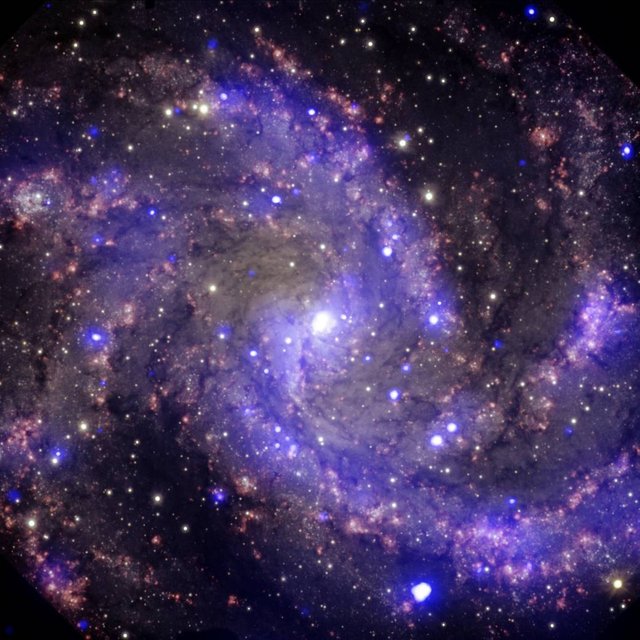 Picture Credit : NASA
Picture Credit : NASA
Hope you people will read my article and provide your valuable suggestions and thoughts by commenting below. So, without any further delay let us start the exploration!!
As you can probably see a very large
galaxy . This is a typical
elliptical galaxy and is currently listed as one of the largest we've actually discovered. Now,
elliptical galaxies are very unusual to begin with. But what's really strange about this one is that right in the middle it doesn't seem to have any central
black hole.
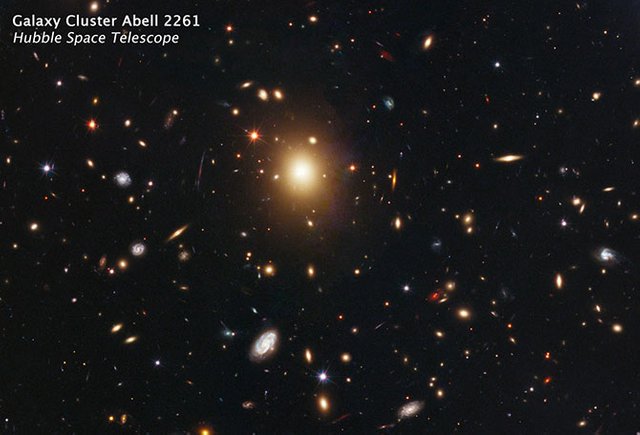 Picture Credit : NASA
Picture Credit : NASA
Well, unfortunately there isn't really much we know about this galaxy as a matter of fact
Wikipedia only lists this galaxy right
here under the list of the largest galaxies as one of the galaxies. Now, it tells you the size and it tells you the distance to the galaxy. It also tells you the type as well. But that's all we really know about this except for the fact that there seems to be no central
black hole.
Now, how do we know this? Well by looking at the central region of this galaxy the scientists discovered that this
bulge that you see right avove in the picture is the largest
bulge they've seen of all of the galaxies. In other words the central region of this galaxy is so big that it just doesn't make sense! If there was a central black hole it would not be so big.
But how is it that this galaxy is staying together? How is it even possible for it to not just fly apart? Well, I wanted to take the help of the
Universe Sandbox to just discuss with you that a galaxy does not need to have a central black hole to basically stay a galaxy. As a matter of fact, if we were to go back to our own
Milky Way and then if we were to imagine basically erasing
Sagittarius A* from the center of the
Milky Way. What do you think will happen? Do you think the galaxies would actually fly apart and become just a bunch of independent stars?
Well, the reality is that it's very unlikely to happen! Mostly, because the actual black hole only takes up a very small fraction of a total mass of the central bulge and also of the galaxy itself. There are very few galaxies out there that actually have super massive black holes that are a big part of them.
We tried to actually simulate this and see if a galaxy can survive without an actual black hole in the middle and we've done this by using
Universe Sandbox and there is a randomly generated galaxy in
Universe Sandbox that seems to be a
spiral galaxy. So, it's not an
elliptical galaxy like the one you just saw called a
A2261-BCG (short for Abell 2261 Brightest Cluster Galaxy). Well, we are going to assume that this kind of happens to basically any galaxy.
So, first of all we actually accelerated time just to see if the galaxy stays stable over time. So, we made this run a little bit faster until we saw stars move around and it seems like the galaxy is sort of more or less skipping together and most of this is because of two things: one is that this central bulge right there already has a tremendous mass and just by itself it creates a huge ripple in space-time and because of the mass that is enough to hold the rest of the galaxy together.
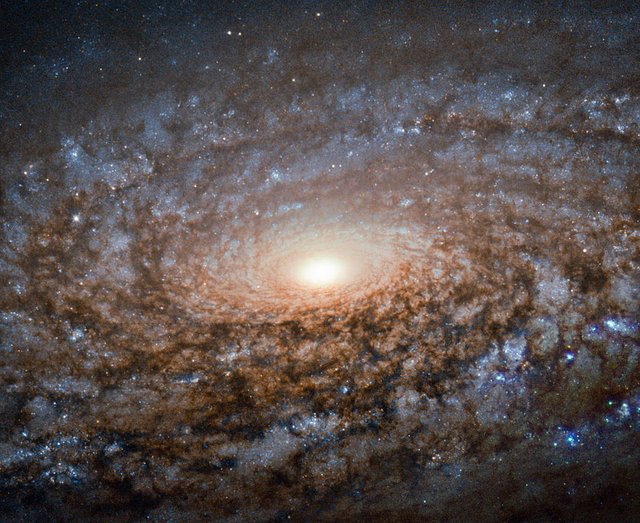 Picture Credit : NASA
Picture Credit : NASA
On the other hand,
95% of this galaxy is also
dark matter and it's really the
dark matter that keeps it all together. If I were to remove
dark matter, you'll see that it just flies apart. But will the actual
black hole in the middle keep it together? Well, to understand that we basically removed the super massive black hole in the simulation that's currently approximately
50 billion masses of the
Sun. It's quite a lot actually a lot bigger than our own black hole in the middle of the
Milky Way and we run the simulation again to see what happens?
Now, remember the dark matter is still there. It has actually disappeared and we noticed that it starts kind of increasing the central region. In other words, the central space inside this galaxy starts expanding and this is exactly what we actually observe in A2261-BCG. Now, there was an observation that is very interesting because as central black hole is gone; the central region of the black hole expands dramatically. It becomes a lot less dense and the galaxy itself is also a lot large than it used to be.
Now, it's not a spiral galaxy anymore because there is nothing to orbit around and technically this is actually from a distance at least, an elliptical galaxy and this is kind of what we observe in a lot of galaxies like A2261-BCG. But most elliptical galaxies do have central black holes. But this one even though it's one of the most massive of discovered and one of the biggest we've discovered seems to have nothing. As a matter of fact, compared to our own Milky Way let's just imagine this is A2261-BCG; our own Milky Way would be about ten times smaller. So, it'll be only about 50 times less massive.
In other words, even though our own Milky Way has about 400 billion stars A2261-BCG has something like 10 trillion stars in there and as you can see even without a central black hole this seems to survive just fine. Now, we're not entirely sure how this galaxies lost its black hole. There are some speculations about it currently possibly having some black holes in the middle or possibly just having huge black holes and there are also some theories that suggest that may be in the past this particular galaxy actually had two black holes which due to a collision of some sort and those two black holes just with time and because of the orbit that they had basically kicked each other out. In other words they were orbiting around one another and with time this kind of flew apart.
Now, I think that's actually probably the best explanation we have about how these black holes disappear because there is really no other reason for them not to be there! Now, what do you think would happen if I were to remove dark matter from there and this is actually the big moment of truth that dark matter is really the most important part of any galaxy because we saw as soon as it's gone; as soon as it disappears; the entire galaxy kind of just evaporates and flies away. There's no galaxies possible without the dark matter.
Now, interestingly we had one of the simulations where doesn't have any
Dark Matter. So this was the simulation where we had a
supernova in a galaxy and it does have a very nice located
spiral galaxy even with a
bulge and everything that represents our own
Milky Way. If I were to remove the super massive black hole from this particular galaxy and the in this case is the
Milky Way sort of representation. We noticed that without the particular super massive black hole this galaxy just turns into like a ring.
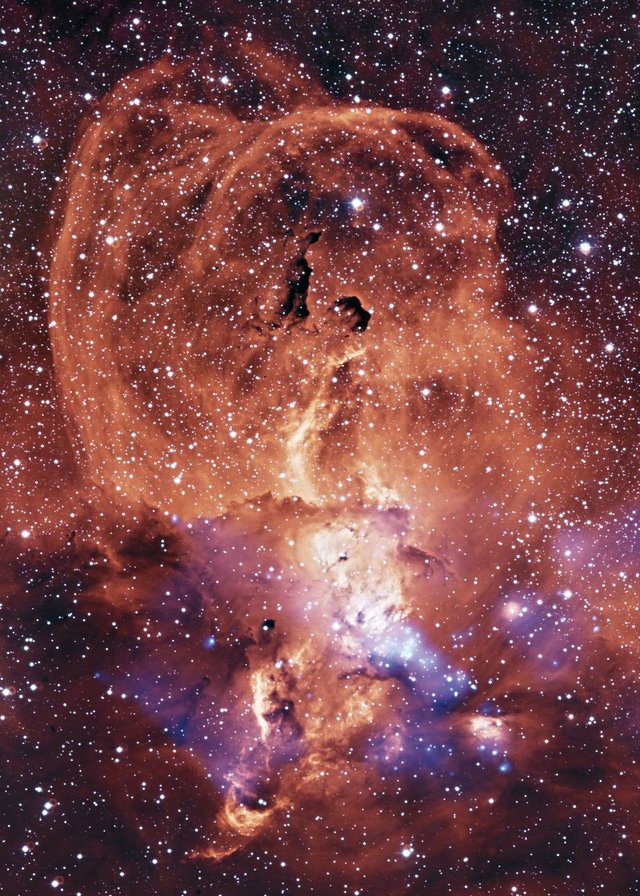 Picture Credit : NASA
Picture Credit : NASA
Now, here's ring apart! We've actually observed galaxies that look like this. There are actually pictures of several galaxies that seem to have this ring like shape in the middle. Why? Well, just may be for the same reason that they don't have a central black hole anymore. So, that by itself is kind of interesting! But we noticed this is what happens when we have no dark matter or I guess almost no dark matter and no central black hole in the middle. So, this is kind of what occurs!
Now, there's another simulation of a galaxy we did. This is actually a relatively massive and a large galaxy as well and I just wanted to know what happens if there is a black hole in the middle and then we just kind of remove the
dark matter instead and you'll see that galaxies really fall apart pretty quickly without
dark matter. Now, in terms of black holes at the center of those galaxies pretty much all of the galaxies we found have them. But many
dwarf galaxies and many small galaxies don't have central black holes and by this I mean
A2261-BCG is the first large or super massive galaxy that we've seen which has no super massive black hole. Why? That’s actually a good question! Well, so one day we will hopefully discover more of them and one day we will hopefully be able to explain how those black holes actually disappear.
But for now that's really kind of all we know that most galaxies need a supermassive black hole. But don't compulsorily have to have them and we know that even without a supermassive black hole a galaxy can exist just fine and if we were to remove this particular supermassive black hole. Once again if there is no dark matter it kind of just flies apart and becomes really nothing. But however if we were to do the same and just remove the supermassive black hole and actually keep the dark matter in there; it's probably not actually going to fly apart and instead become once again an elliptical galaxy and I guess this kind of goes to show that even though we assume that all galaxies have something really massive in the middle. That something massive doesn't have to be an actual black hole. It can be the actual bulge which itself creates such a huge mass that it's enough for most galaxies to use this as basically the center and the rest of the stars and the rest of the matter just kind of orbits around it and I'm sure Dark Matter also helps as well.

@star-vc
So, that's all I wanted to discuss about in this article and hopefully we've learnt a little bit more about A2261-BCG (short for Abell 2261 Brightest Cluster Galaxy). Thank you so much for reading this article guys and if you've enjoyed reading the information in this article, don't forget to Upvote and Resteem for those who enjoys reading space articles and wants to learn more through the information provided here!!
REFERENCES :
Information Sources: 1 2 3 4 5 6 7


For : @steemSTEM
Picture Credit: @star-vc





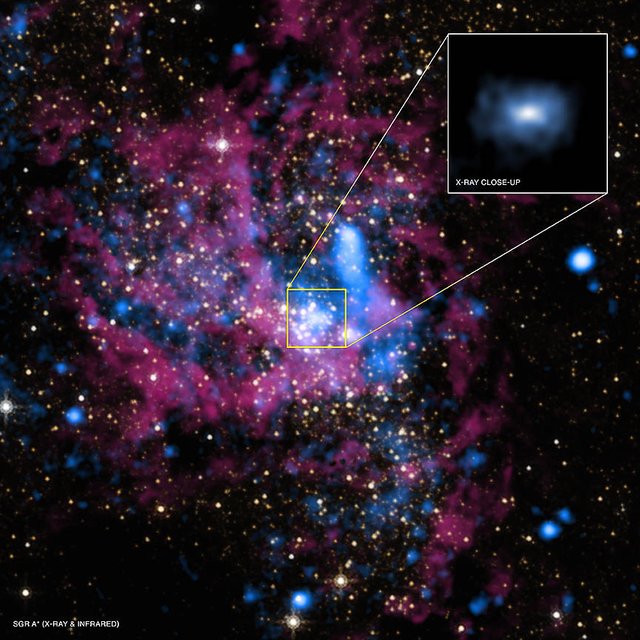
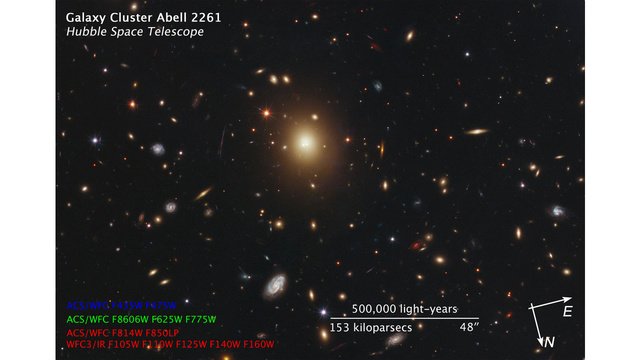
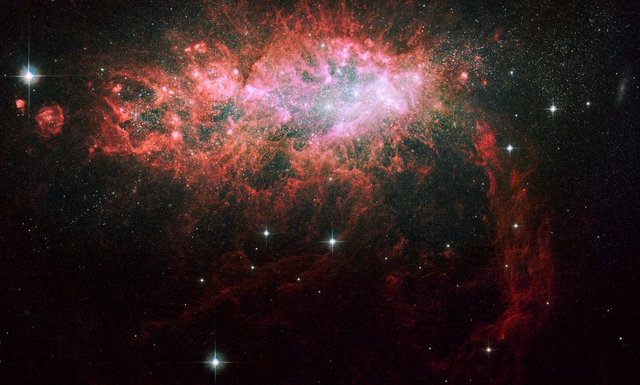
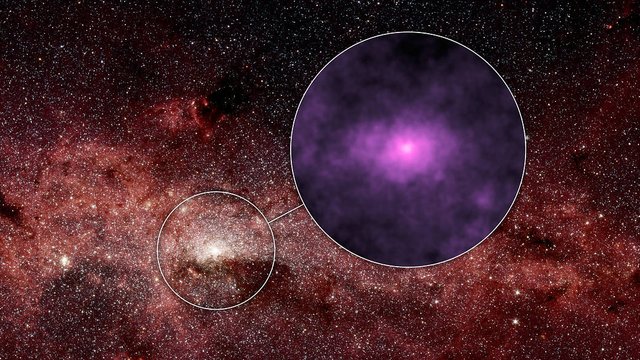
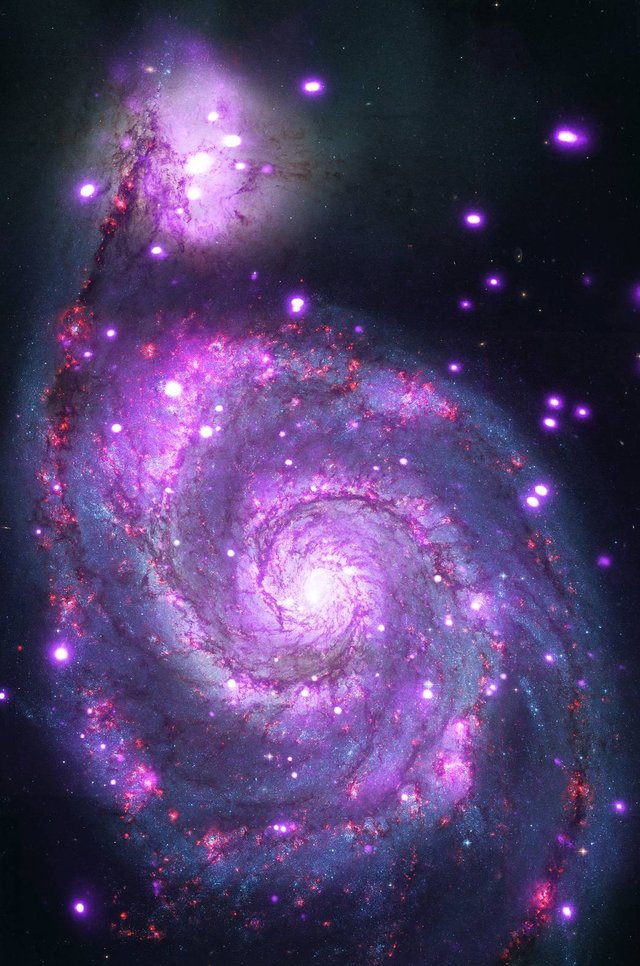
Love it
Hi @dawnchurch3! I am glad you liked it.. :)
Your Post Has Been Featured on @Resteemable!
Feature any Steemit post using resteemit.com!
How It Works:
1. Take Any Steemit URL
2. Erase
https://3. Type
reGet Featured Instantly & Featured Posts are voted every 2.4hrs
Join the Curation Team Here | Vote Resteemable for Witness
Thanks a lot for this honor!! :)
Galaxies full of dark matter are really an important topic of studies, in particular related to the options of indirectly detecting dark matter. Many dark matter in the same place means that dark matter has a lot of chance to annihilate in there, and we could potentially observe the outcome of this annihilation through cosmics.
Thanks for the nice post. I didn't know about this news :)
Thanks for discussing about this @lemouth! Your comment regarding the scope of dark matter added extra value to my article... :)
Just following your foot steps of sharing information which ever I have! Hope to explore more and more new stuffs with coming days! I want to contribute my best for the #steemSTEM community.. :)
We are more than welcoming your contributions! I am looking forward to read them ^^
Wow... Great article. I loved to read it. I must take a closer look at all of your articles and read them all :-)
Great job :-)
Hi @astrophoto.kevin! I am glad that you liked it. You are always welcome to read and explore my articles!! I will be more than happy to discuss such things with you so that we can learn together with time and efforts!! :)
I also will be happy to discuss these things in future and I hope that we will have a lot of opportunities :-)
Yes ofcourse!! You are always welcome buddy!! :)
Thanks, mate! 😊